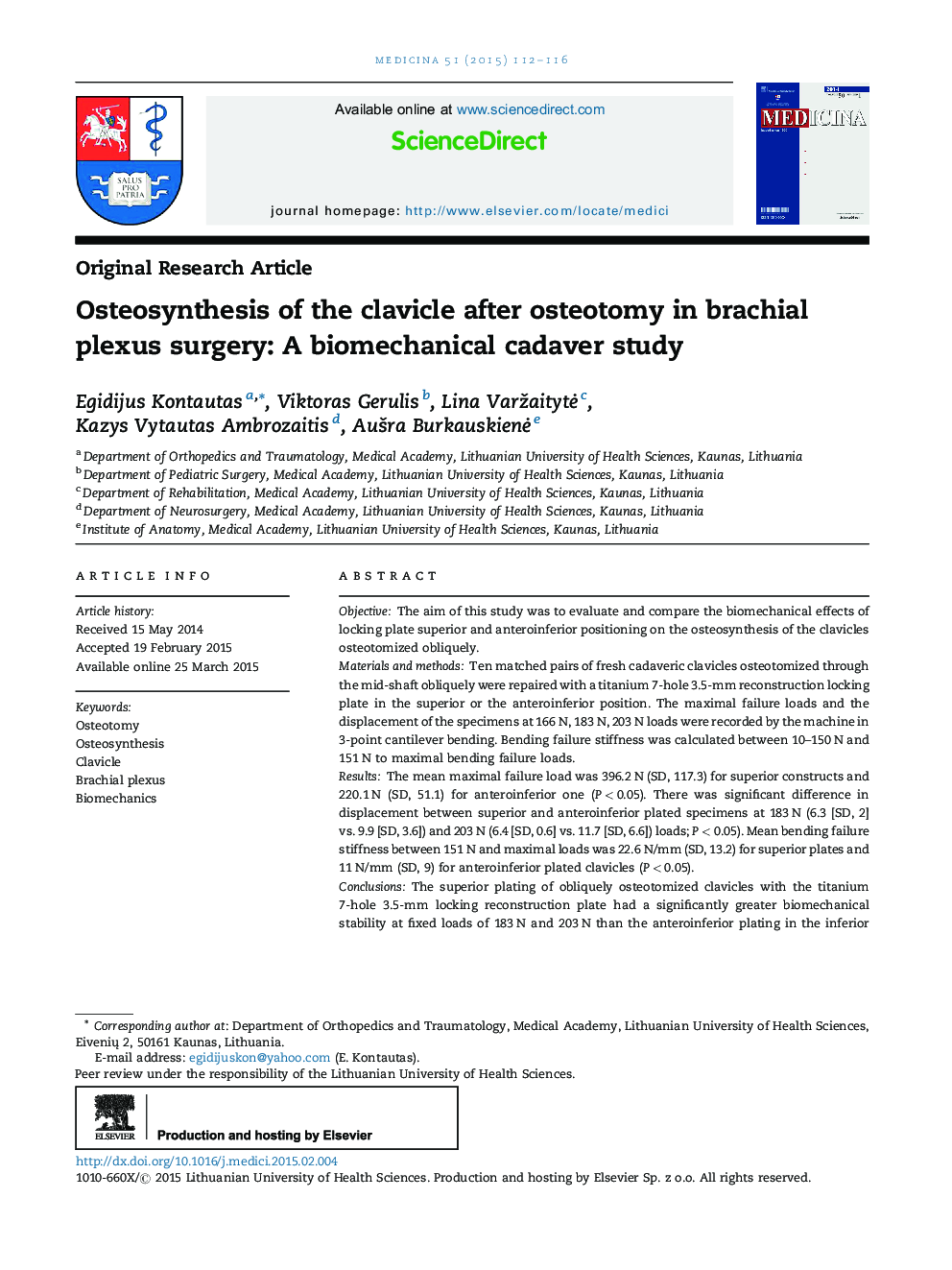| Article ID | Journal | Published Year | Pages | File Type |
|---|---|---|---|---|
| 2681832 | Medicina | 2015 | 5 Pages |
ObjectiveThe aim of this study was to evaluate and compare the biomechanical effects of locking plate superior and anteroinferior positioning on the osteosynthesis of the clavicles osteotomized obliquely.Materials and methodsTen matched pairs of fresh cadaveric clavicles osteotomized through the mid-shaft obliquely were repaired with a titanium 7-hole 3.5-mm reconstruction locking plate in the superior or the anteroinferior position. The maximal failure loads and the displacement of the specimens at 166 N, 183 N, 203 N loads were recorded by the machine in 3-point cantilever bending. Bending failure stiffness was calculated between 10–150 N and 151 N to maximal bending failure loads.ResultsThe mean maximal failure load was 396.2 N (SD, 117.3) for superior constructs and 220.1 N (SD, 51.1) for anteroinferior one (P < 0.05). There was significant difference in displacement between superior and anteroinferior plated specimens at 183 N (6.3 [SD, 2] vs. 9.9 [SD, 3.6]) and 203 N (6.4 [SD, 0.6] vs. 11.7 [SD, 6.6]) loads; P < 0.05). Mean bending failure stiffness between 151 N and maximal loads was 22.6 N/mm (SD, 13.2) for superior plates and 11 N/mm (SD, 9) for anteroinferior plated clavicles (P < 0.05).ConclusionsThe superior plating of obliquely osteotomized clavicles with the titanium 7-hole 3.5-mm locking reconstruction plate had a significantly greater biomechanical stability at fixed loads of 183 N and 203 N than the anteroinferior plating in the inferior directed cantilever bending. The superior plating osteosynthesis exhibited a significantly greater stiffness from 151 N to maximal bending failure loads as well.
